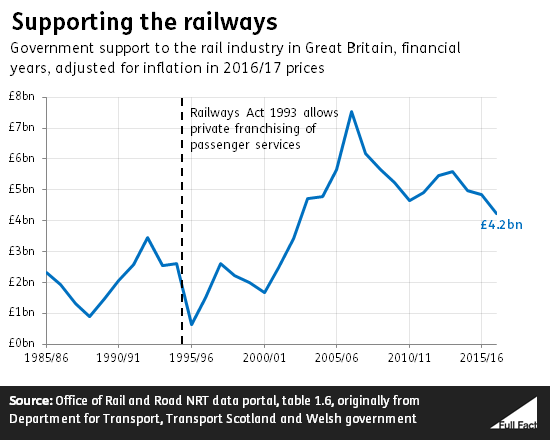Cannydc wrote:I am referring to the laughable inefficiencies of many of the current rail franchises.
Parliament’s Transport Committee recently warned this system was “no longer fit for purpose” and was leading to increased ticket fares and poor performance. “It has not yielded all the competitive benefits initially envisaged by the Government in the early 1990s,” it said.
Profit-making companies place shareholder interests above customer interests, and it’s manifestly unfair for private investors to profit from the unavoidable costs of commuting. I believe that a nationalised system would have more incentive to drive down fares and improve the service.
Last year 17 of the main train companies that run normal passenger services together made an annual operating profit of £343m – an average of £20m per company.
They also paid themselves very handsomely. The top director for each company was paid an average of nearly £300,000, including pension and perks. One of them earned £478,000 – almost 17 times the UK median wage.
Eight of the companies also paid out £185m in dividends to shareholders.
I have little doubt that an integrated service without shareholder payouts would save money,
Take East Coast rail. The service was rescued by a government-controlled company in 2009, after National Express fell into financial trouble and the franchise collapsed.
It was handed back to the private sector in 2015, but the experiment had undoubtedly been a success. Under public ownership, satisfaction rates climbed to 91 per cent – the joint top score for a franchised long distance operator. In its final year of service, it provided £225m to the Department for Transport, saw ticket sales rise, and made a pre-tax profit of £8.4m.
No amount of private sector inefficiencies and mismanagement are ever going to usurp the four biggest disasters that have happened when our railways were totally under public ownership, i.e. British Rail.
1. The slow adoption from steam to diesel and particularly electric traction.
2. The slow adoption of electrification of railway lines in the UK. For example, the GWML electrification would have been done decades ago in most European countries.
3. The Beeching Axe. Mainly because the transport minister had a vested interest in road transport. Ernest Marples. This was simply industrial vandalism on a nationwide scale.
4. The abandonment of the APT (tilting train) project, due to lack of government funding. We invented the tilting train and should have seen the project through, rather than embarrassingly having to buy back some of the technology from the Italians. Pendolinos.
Privatization of the railways hasn't come anywhere close to any of the above in terms of losses and chances missed.
So canny, take those rose-tinted spectacles off. British Rail were anything but the be all and end all.
The one big major thing that BR put onto the table as plan B after the APT failure was the Intercity 125/HST/Class 43 which at the time was a masterpiece of engineering and groundbreaking technology. The results speak for themselves. This train has even been described as 'the train that saved British railways' and I agree.




